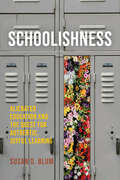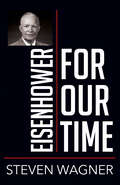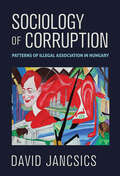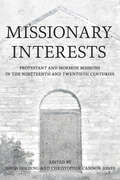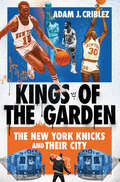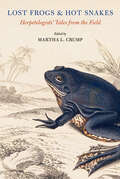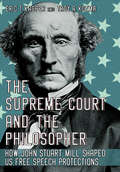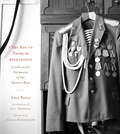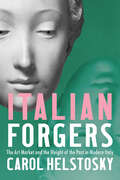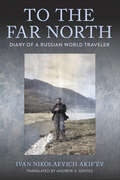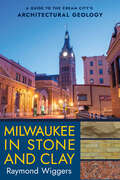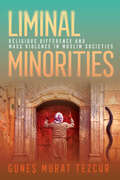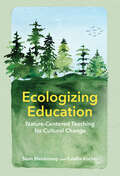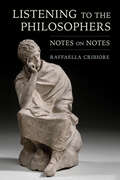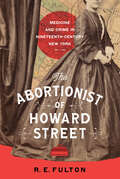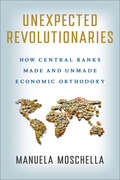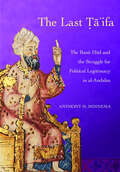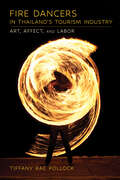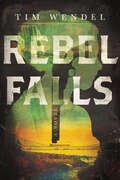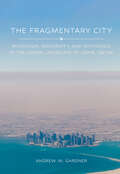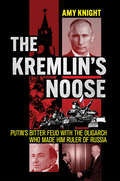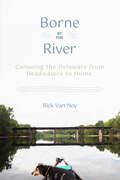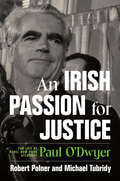- Table View
- List View
Schoolishness: Alienated Education and the Quest for Authentic, Joyful Learning
by Susan D. BlumIn Schoolishness, Susan D. Blum continues her journey as an anthropologist and educator. The author defines "schoolishness" as educational practices that emphasize packaged "learning," unimaginative teaching, uniformity, constant evaluation by others, arbitrary forms, predetermined time, and artificial boundaries, resulting in personal and educational alienation, dependence, and dread.Drawing on critical, progressive, and feminist pedagogy in conversation with the anthropology of learning, and building on the insights of her two previous books Blum proposes less-schoolish ways of learning in ten dimensions, to lessen the mismatch between learning in school and learning in the wild. She asks, if learning is our human "superpower," why is it so difficult to accomplish in school? In every chapter Blum compares the fake learning of schoolishness with successful examples of authentic learning, including in her own courses, which she scrutinizes critically.Schoolishness is not a pedagogical how-to book, but a theory-based phenomenology of institutional education. It has moral, psychological, and educational arguments against schoolishness that, as Blum notes, "rhymes with foolishness."
Eisenhower for Our Time (People for Our Time)
by Steven WagnerEisenhower for Our Time provides an introduction to the Eisenhower presidency, extracting lessons for today's world. Steven Wagner proposes that the need to maintain balance defines Eisenhower's presidency. Wagner examines a series of defining moments that were among Eisenhower's greatest challenges, some of which resulted in his greatest accomplishments: the decision to run for president, his political philosophy of the "Middle Way," the creation of a national security policy, the French Indochina War, Senator Joseph McCarthy, the Little Rock Desegregation Crisis, the Race for Space, and the famous Farewell Address. Wagner looks at Eisenhower's executive ability, leadership, decision making, and willingness to compromise, as well as the qualities of duty, integrity, and good character. The moments detailed in Eisenhower for Our Time show Eisenhower as a president intimately engaged in the decisions that defined America in his time and that apply to ours today. The President's actions place him among the most successful presidents and provide many lessons to guide us in our time and in the future.
Sociology of Corruption: Patterns of Illegal Association in Hungary
by David JancsicsIn Sociology of Corruption, David Jancsics provides a fresh approach to the study of corruption in Hungary, which once seemed to be the most likely of the ex-communist bloc nations to catch up to the West and is, according to many experts and scholars, a country with a highly corrupt dynamic.Based on data from 2022, Hungary is now the most corrupt member state of the European Union. There is also a consensus among experts that a small clique of corrupt political actors has captured most Hungarian state institutions and a significant portion of the business sector. What fostered corruption in Hungary? What are the most typical forms of corruption in this country? What do Hungarians think about it? What is the role of prime minister Viktor Orbán in this? Sociology of Corruption proposes a novel sociological theory of corruption focusing on social status and relationships, network structures, and power dynamics as important explanatory factors of corrupt behavior. Although his focus is on Hungary, Jancsics's findings are applicable to other nations and cultural contexts.
Missionary Interests: Protestant and Mormon Missions of the Nineteenth and Twentieth Centuries
by Edited by David Golding and Christopher Cannon JonesIn Missionary Interests, David Golding and Christopher Cannon Jones bring together works about Protestant and Mormon missionaries in the nineteenth and twentieth centuries, charting new directions for the historical study of these zealous evangelists for their faith. Despite their sectarian differences, both groups of missionaries shared notions of dividing the world categorically along the lines of race, status, and relative exoticism, and both employed humanitarian outreach with designs to proselytize.American missionaries occupied liminal spaces: between proselytizer and proselytized, feminine and masculine, colonizer and colonized. Taken together, the chapters in Missionary Interests dismantle easy characterizations of missions and conversion and offer an overlooked juxtaposition between Mormon and Protestant missionary efforts in the nineteenth and twentieth centuries.
Kings of the Garden: The New York Knicks and Their City
by Adam J. CriblezIn Kings of the Garden, Adam J. Criblez traces the fall and rise of the New York Knicks between the 1973, the year they won their last NBA championship, and 1985, when the organization drafted Patrick Ewing and gave their fans hope after a decade of frustrations. During these years, the teams led by Walt Frazier, Earl Monroe, Bob McAdoo, Spencer Haywood, and Bernard King never achieved tremendous on-court success, and their struggles mirrored those facing New York City over the same span. In the mid-seventies, as the Knicks lost more games than they won and played before smaller and smaller crowds, the city they represented was on the brink of bankruptcy, while urban disinvestment, growing income inequality, and street gangs created a feeling of urban despair. Kings of the Garden details how the Knicks' fortunes and those of New York City were inextricably linked. As the team's Black superstars enjoyed national fame, Black musicians, DJs, and B-boys in the South Bronx were creating a new culture expression—hip-hop—that like the NBA would become a global phenomenon. Criblez's fascinating account of the era shows that even though the team's efforts to build a dynasty ultimately failed, the Knicks, like the city they played in, scrappily and spectacularly symbolized all that was right—and wrong—with the NBA and the nation during this turbulent, creative, and momentous time.
Lost Frogs and Hot Snakes: Herpetologists' Tales from the Field
by Martha L. CrumpLost Frogs and Hot Snakes reveals the thrills and travails that herpetologists experience when working with amphibians and reptiles in the wild. With essays from fifty field biologists, this volume, edited by Martha L. Crump, presents a multifaceted yet intimate look at life in pursuit of knowledge about the natural world. From the beaches of Peru to the mountains of China, the stories in this collection place readers in the boots of field biologists as they watch, count, experiment, and survey. Some recall mishaps and misadventures—contending with leeches, dangling off a precipice while in a truck. Others tell of once-in-a-lifetime encounters—discovering a new frog species, spotting a rare snake. Together, these stories offer an understanding of what field biology is, what field biologists do, and how they go about doing it. Written with candor, warmth, and a dash of humor, the stories in Lost Frogs and Hot Snakes will encourage readers to appreciate the value of engaging with nature and of the amphibians and reptiles so critical to the vitality of our planet.
The Supreme Court and the Philosopher: How John Stuart Mill Shaped US Free Speech Protections
by Eric T. Kasper Troy A. KozmaThe Supreme Court and the Philosopher illustrates how the modern US Supreme Court has increasingly adopted a view of the constitutional right to the freedom of expression that is classically liberal in nature, reflecting John Stuart Mill's reasoning in On Liberty. A landmark treatise outlining the merits of limiting governmental and social power over the individual, On Liberty advocates for a maximum protection of human freedom. Proceeding case by case and covering a wide array of issues, such as campaign finance, offensive speech, symbolic speech, commercial speech, online expression, and false statements, Eric T. Kasper and Troy A. Kozma show how the Supreme Court justices have struck down numerous laws for infringing on the freedom of expression.Kasper and Kozma demonstrate how the adoption of Mill's version of free speech began with Justice Oliver Wendell Holmes Jr. more than a century ago and expanded over time to become the prevailing position of the Court today. The authors argue that this embrace of Mill's rationale has led to an unmistakable reorientation in the Court's understanding of free expression jurisprudence.The Supreme Court and the Philosopher is the first book to comprehensively explore how the political philosophy of Mill has influenced the highest court in the land. In targeting the underlying philosophical reasons that explain why the modern Supreme Court renders its First Amendment decisions, this book is particularly timely, as the issues of censorship and freedom of expression are debated in the public square today.
I Try Not to Think of Afghanistan: Lithuanian Veterans of the Soviet War (NIU Series in Slavic, East European, and Eurasian Studies)
by Anna ReichI Try Not to Think of Afghanistan includes photographs and commentaries from Lithuanian veterans of the Soviet War in Afghanistan (1979–89), addressing the lasting realities of war and its effects on those conscripted to fight. Unflinching first-person accounts give details of training, combat, and the often difficult return to society for military conscripts within the Soviet system. Anna Reich gives insight into the experiences of not only the Lithuanian veterans from the Soviet War in Afghanistan but also veterans from all countries who face similar struggles and challenges.For three months, Reich interacted with twenty-two veterans in their homes and meeting halls and throughout their daily routines to produce portraits that provide intimate and unvarnished portrayals of their lives and the lasting effects of forced military service in the Soviet army. Often ostracized socially because of their involvement with the Soviet army, the veterans frequently feel invisible: there are no social programs to assist them in their attempts to address post-traumatic stress disorder and assimilate into society, their cause is largely unknown, and the government responsible for their conscriptions no longer exists.I Try Not to Think of Afghanistan is the culmination of eight years of investigation into the psychological toll of war and trauma. In providing a rarely seen perspective of life after combat, the book intersects with contemporary discourse, specifically the way the US experience in Afghanistan closely mirrors that of the Soviets and the Russian Federation's forced conscription of young men to fight in Ukraine.
Italian Forgers: The Art Market and the Weight of the Past in Modern Italy
by Carol HelstoskyItalian Forgers takes an unorthodox approach to the fascinating topic of art forgery, focusing not on art forgery per se, but on the major forgery scandals that shifted the Italian art market in response to constant, and often intense, demand for Italian objects. By focusing on power dynamics that both precipitated forgery scandals and forged Italian cultural identities, this book connects the debates and discussions about three well-known Italian forgers—Giovanni Bastianini, Icilio Joni, and Alceo Dossena—to anchor and investigate the mechanics of the Italian art market from unification through the fascist era.Carol Helstosky examines foreign accounts of transactions and Italian writings about the art market. The actions and words of Italian dealers illustrate how the Italian art and antiquities market was an undeniably modern industry, on par with tourism in terms of its contribution to the Italian economy and to understandings of Italian identity. These accounts also reveal how dealers, artists, go-betweens, guides, and restorers worked to not only meet the intense demand for Italian products but also to develop highly sophisticated business practices to maintain financial stability and respond to shifts in demand consciously (but not always conscientiously).Italian Forgers weaves a compelling narrative about the history of Italian identity, forgery, and the value of the past. As a result, Helstosky brings historical perspective to the study of art forgery and art fraud. She reveals how historical circumstances and structural imbalances of cultural power shaped the market for art and antiquities and amplified incidents of art deception and forgery scandals.
To the Far North: Diary of a Russian World Traveler (NIU Series in Slavic, East European, and Eurasian Studies)
by Ivan Nikolaevich Akif’ëvThis annotated translation of To the Far North presents the diary of a twenty-seven-year-old Russian physician who was part of the 1900 expedition to the Chukotka Peninsula to find gold. No other account so richly details life along the North Pacific Rim before World War I, especially from a Russian perspective. This volume relates the expedition's formation, development, and aftermath and offers unique insights on the region's place in both Russian policymaking and geopolitics. The illustrated diary includes picturesque descriptions of San Francisco, the Nome Gold Rush, Chukchi culture, Petropavlovsk, Vladivostok, and Nagasaki, Japan.Andrew A. Gentes's translation is based on an edition of Akifëv's book that was published in St. Petersburg in 1904. The diary shows how Russian and American views and cultural values clashed over a territory that is today more geopolitically important than ever. By documenting Akifëv's personal travels outside the expedition, To the Far North also demonstrates, in both human and personal terms, the role Russians played in shaping this region's history.
Milwaukee in Stone and Clay: A Guide to the Cream City's Architectural Geology
by Raymond WiggersMilwaukee in Stone and Clay follows directly in the footsteps of Raymond Wiggers's previous award-winning book, Chicago in Stone and Clay. It offers a wide-ranging look at the fascinating geology found in the building materials of Milwaukee County's architectural landmarks. And it reveals the intriguing and often surprising links between science, art, and engineering. Laid out in two main sections, the book first introduces the reader to the fundamentals of Milwaukee's geology and its amazing prehuman history, then provides a site-by-site tour guide. Written in an engaging, informal style, this work presents the first in-depth exploration of the interplay among the region's most architecturally significant sites, the materials they're made of, and the sediments and bedrock they're anchored in. Raymond Wiggers crafted Milwaukee in Stone and Clay as an informative and exciting overview of this city. His two decades of experience leading architectural-geology tours have demonstrated the popularity of this approach and the subject matter.
Liminal Minorities: Religious Difference and Mass Violence in Muslim Societies (Religion and Conflict)
by Günes Murat TezcürLiminal Minorities addresses the question of why some religious minorities provoke the ire of majoritarian groups and become targets of organized violence, even though they lack significant power and pose no political threat. Güneş Murat Tezcür argues that these faith groups are stigmatized across generations, as they lack theological recognition and social acceptance from the dominant religious group. Religious justifications of violence have a strong mobilization power when directed against liminal minorities, which makes these groups particularly vulnerable to mass violence during periods of political change.Offering the first comparative-historical study of mass atrocities against religious minorities in Muslim societies, Tezcür focuses on two case studies—the Islamic State's genocidal attacks against the Yezidis in northern Iraq in the 2010s and massacres of Alevis in Turkey in the 1970s and 1990s—while also addressing discrimination and violence against followers of the Bahá'í faith in Iran and Ahmadis in Pakistan and Indonesia. Analyzing a variety of original sources, including interviews with survivors and court documents, Tezcür reveals how religious stigmatization and political resentment motivate ordinary people to participate in mass atrocities.
Ecologizing Education: Nature-Centered Teaching for Cultural Change
by Sean Blenkinsop Estella C. KuchtaEcologizing Education explores how we can reenvision education to meet the demands of an unjust and rapidly changing world. Going beyond "green" schooling programs that aim only to shape behavior, Sean Blenkinsop and Estella Kuchta advance a pedagogical approach that seeks to instills eco-conscious and socially just change at the cultural level. Ecologizing education, as this approach is called, involves identifying and working to overcome anti-ecological features of contemporary education. This approach, called ecologizing education, aims to develop a classroom culture in sync with the more-than-human world where diversity and interdependency are intrinsic.Blenkinsop and Kuchta illustrate this educational paradigm shift through the real-world stories of two public elementary schools located in British Columbia. They show that this approach to learning starts with recognizing the environmental and social injustices that pervade our industrialized societies. By documenting how ecologizing education helps children create new relationships with the natural world and move toward mutual healing, Blenkinsop and Kuchta offer a roadmap for what may be the most potent chance we have at meaningful change in the face of myriad climate crises. Timely, practical, and ultimately inspirational, Ecologizing Education is vital reading for any parent, caregiver, environmentalist, or educator looking for wholistic education that places nature and the environment front and center.
Listening to the Philosophers: Notes on Notes
by Raffaella CribioreListening to the Philosophers offers the first comprehensive look into how philosophy was taught in antiquity through a stimulating study of lectures by ancient philosophers that were recorded by their students. Raffaella Cribiore shows how the study of notes—whether Philodemus of Gadara's notes of Zeno's lectures in the first century BCE, or Arrian recording the Discourses of Epictetus in the second century CE, or the students of Didymus the Blind in the fourth century and Olympiodorus in the sixth century—can enable us to understand the methods and practices of what was an orally conducted education. By considering the pedagogical and mnemonic role of notetaking in ancient education, Listening to the Philosophers demonstrates how in antiquity the written and the spoken worlds were intimately intertwined.
The Abortionist of Howard Street: Medicine and Crime in Nineteenth-Century New York
by R.E. FultonJosephine McCarty had many identities. But in Albany, New York, she was known as "Dr. Emma Burleigh," the abortionist of Howard Street.On January 17, 1872, McCarty boarded a streetcar in Utica, New York, shot her ex-lover in the face, and disembarked, unaware that her bullet had passed through her target's head and into the heart of the innocent man sitting beside him. The unlucky passenger died within minutes. Josephine McCarty was arrested for attempted murder and quickly became the most notorious woman in central New York. The Abortionist of Howard Street was, however, far more than a murderer. In Maryland she was "Johnny McCarty," a blockade runner and spy for Confederate forces. New Yorkers whispered of her as a mistress to corrupt Albany politicians. So who was she?The prosecution in her murder trial claimed she was a calculating and heartless operative both in the bedroom and in her public life. Or was she the victim of ill fortune and the systemic weight of misogyny and male violence? The answer, of course, was not as simple as either narrative. In this absorbing and rich history, R.E. Fulton considers the nuances of Josephine McCarty's life from marriage to divorce, from financial abuse to quarrels with intimate partners and more, trying to decipher the truth behind the stories and myths surrounding McCarty and what ultimately led her to that Utica streetcar with a pistol in her dress pocket. In The Abortionist of Howard Street, Fulton revisites a rich history of women's experience in mid-nineteenth century America, revealing McCarty as a multifaceted, fascinating personification of issues as broad as reproductive health, education, domestic abuse, mental illness, and criminal justice.
Unexpected Revolutionaries: How Central Banks Made and Unmade Economic Orthodoxy (Cornell Studies in Money)
by Manuela MoschellaIn Unexpected Revolutionaries, Manuela Moschella investigates the institutional transformation of central banks from the 1970s to the present. Central banks are typically regarded as conservative, politically neutral institutions that uphold conventional macroeconomic wisdom. Yet in the wake of the 2008 global financial crisis and the 2020 COVID-19 crisis, central banks have upended observer expectations by implementing largely unknown and unconventional monetary policies. Far from abiding by well-established policy playbooks, central banks now engage in practices such as providing liquidity support for a wide range of financial institutions and quantitative easing. They have even stretched the remit of monetary policy into issues such as inequality and climate change. Moschella argues that the political nature of central banks lies at the heart of these transformations. While formally independent, central banks need political support to justify their policies and powers, and to obtain it, they carefully manage their reputation among their audienceselected officials, market actors, and citizens. Challenged by reputational threats brought about by twenty-first-century recessionary and deflationary forces, central banks such as the Federal Reserve System and the European Central Bank strategically deviated from orthodox monetary policies to preempt or manage political backlash and to regain public trust. Central banks thus evolved into a new role only in coordination with fiscal authorities and on the back of public contestation. Eye-opening and insightful, Unexpected Revolutionaries is necessary reading for discussions on the future of the neoliberal macroeconomic regime, the democratic oversight of monetary policymaking, and the role that central banks canor cannotplay in our domestic economies.
The Last Ta'ifa: The Banu Hud and the Struggle for Political Legitimacy in al-Andalus (Medieval Societies, Religions, and Cultures)
by Anthony H. MinnemaIn The Last Ta'ifa, Anthony H. Minnema shows how the Banu Hud, an Arab dynasty from Zaragoza, created and recreated their vision of an autonomous city-state (ta'ifa) in ways that reveal changes to legitimating strategies in al-Andalus and across the Mediterranean. In 1110, the Banu Hud lost control of their emirate in the north of Iberia and entered exile, ending their century-long rule. But far from accepting their fate, the dynasty adapted by serving Christian kings, nurturing rebellions, and carving out a new state in Murcia to recover, maintain, and grow their power. By tracing the Banu Hud across chronicles, charters, and coinage, Minnema shows how dynastic leaders borrowed their rivals' claims and symbols and engaged in similar types of military campaigns and complex alliances in an effort to cultivate authority. Drawing on Arabic, Latin, and vernacular sources, The Last Ta'ifa uses the history of the Banu Hud to connect the pursuit of legitimacy in al-Andalus to the politics of other emerging kingdoms and emirates. The actions of Hudid leaders, Minnema shows, echoed across the region as other kings, rebels, and adventurers employed parallel methods to gain power and resist the forces of centralization, highlighting the constructed nature of legitimacy in al-Andalus and the Mediterranean.
Fire Dancers in Thailand's Tourism Industry: Art, Affect, and Labor
by Tiffany Rae PollockFire Dancers in Thailand's Tourism Industry explores the evolution of fire dancing from informal community jam sessions into the iconic, tourist-oriented performances at beach parties and bars, through a close consideration of the role of affect in the lives of fire dancers in the ever-changing scene. Rather than pursuing the common notion that tourism industries are exploitative enterprises that oppress workers, Tiffany Rae Pollock centers the perspectives of fire artists themselves, who view the industry as simultaneously generative and destructive. Dancers reveal how they employ affect to navigate their lives, art, and labor in this context, showcasing how affect is not only a force that acts on people but also is used and shaped by social actors toward their own ends. Fire Dancers in Thailand's Tourism Industry highlights men as affective laborers, investigating how they manage the eroticization of their identities and the intersections of art and labor in tourist economies. Exploring moments of performance and everyday life, Pollock examines how fire artists reimagine their labor, lives, and communities in Thailand's tourism industry.
Rebel Falls: A Novel
by Tim WendelWith Rebel Falls, Tim Wendel takes us to late summer of 1864. The Civil War rages on. Sherman is marching on Atlanta, while the armies of Grant and Lee battle across Virginia. In the North, war-weariness has made Lincoln's bid for reelection seem doubtful. As the fate of the nation "conceived in Liberty" hangs in the balance, Confederate agents gather in Niagara Falls to plan one last audacious maneuver to turn the tide of the conflict. Rory Chase, a capable yet haunted young woman eager to contribute to the Union cause, accepts a mission from the Secretary of State, William Seward, to travel to Niagara Falls and prevent two rebel spies, John Yates Beall and Bennet Burley, from seizing the U.S.S. Michigan on Lake Erie and bombarding Buffalo, Cleveland, and other northern cities to sow fear and disorder ahead of the upcoming election. To succeed, Rory must gain the rebel spies' trust and, with the help of the Underground Railroad network still operating out of the elegant Cataract House hotel overlooking the Falls, foil their desperate gambit. But can she maintain the pretense of being a Confederate sympathizer long enough to unravel Beall and Burley's ingenious plot?With actual events underpinning the tumultuous story in Rebel Falls, a forgotten chapter in the history of the Civil War is revealed. Far from frontlines, Wendel's exciting, character-driven narrative about a consequential struggle in the shadow of Niagara Falls' dramatic beauty is gripping from start to finish.
The Fragmentary City: Migration, Modernity, and Difference in the Urban Landscape of Doha, Qatar
by Andrew M. GardnerAs Andrew M. Gardner explains in The Fragmentary City, in Qatar and elsewhere on the Arabian Peninsula, nearly nine out of every ten residents are foreign noncitizens. Many of these foreigners reside in the cities that have arisen in Qatar and neighboring states. The book provides an overview of the gulf migration system with its diverse migrant experiences. Gardner focuses on the ways that demography and global mobility have shaped the city of Doha and the urban characteristics of the Arabian Peninsula in general. Building on those migrant experiences, the book turns to the spatial politics of the modern Arabian city, exploring who is placed where in the city and how this social landscape came into historical existence. The author reflects on what we might learn from these cities and the societies that inhabit them. In The Fragmentary City, Andrew M. Gardner frames the contemporary cities of the Arabian Peninsula not as poor imitations of Western urban modernity, but instead as cities on the frontiers of a global, neoliberal, and increasingly urban future.
Byzantine Media Subjects (Medieval Societies, Religions, and Cultures)
by Glenn A. PeersByzantine Media Subjects invites readers into a world replete with images—icons, frescoes, and mosaics filling places of worship, politics, and community. Glenn Peers asks readers to think themselves into a world where representation reigned and humans followed, and indeed were formed. Interrogating the fundamental role of representation in the making of the Byzantine human, Peers argues that Byzantine culture was (already) posthuman. The Byzantine experience reveals the extent to which media like icons, manuscripts, music, animals, and mirrors fundamentally determine humans. In the Byzantine world, representation as such was deeply persuasive, even coercive; it had the power to affect human relationships, produce conflict, and form self-perception. Media studies has made its subject the modern world, but this book argues for media having made historical subjects. Here, it is shown that media long ago also made Byzantine humans, defining them, molding them, mediating their relationship to time, to nature, to God, and to themselves.
The Kremlin's Noose: Putin's Bitter Feud with the Oligarch Who Made Him Ruler of Russia (NIU Series in Slavic, East European, and Eurasian Studies)
by Amy KnightIn The Kremlin's Noose Amy Knight tells the riveting story of Vladimir Putin and the oligarch Boris Berezovsky, who forged a relationship in the early years of the Yeltsin era. Berezovsky later played a crucial role in Putin's rise to the Russian presidency in March 2000. When Putin began dismantling Boris Yeltsin's democratic reforms, Berezovsky came into conflict with the new Russian leader by reproaching him publicly. Their relationship quickly disintegrated into a bitter feud played out against the backdrop of billion-dollar financial deals, Kremlin in-fighting, and international politics. Dubbed the "Godfather of the Kremlin" by the slain Russian-American journalist Paul Klebnikov, Berezovsky was a successful businessman and media mogul who had an outsized role in Russia after 1991. Worth a reported $3 billion by 1997, Berezovsky engineered the reelection of Yeltsin as president in 1996 and negotiated an end to the 1995–96 Chechen war. Despite his own wealth, power, and influence, once he became Putin's enemy, Berezovsky was forced into exile in Britain, where he waged a determined campaign to topple Putin. Kremlin authorities responded with bogus criminal charges and demanded Berezovsky's extradition. Death threats soon followed. In March 2013, after losing a British court battle with another Russian oligarch, Berezovsky was found dead at his ex-wife's mansion outside London. Whether he died from suicide or murder remains a mystery.The Kremlin's Noose sheds crucial new light on the Kremlin's volatile politics under Yeltsin and Putin, helping us understand why democracy in Russia failed so badly. Knight provides a fascinating narrative of Putin's rise to power and his authoritarian rule, told through the prism of his relationship with Russia's once most powerful oligarch, Boris Berezovsky.
Borne by the River: Canoeing the Delaware from Headwaters to Home
by Rick Van NoyAfter a near-fatal stroke and a separation, amidst a global pandemic, Rick Van Noy decided to go for a paddle. In Borne by the River, he charts the story of discovery, and healing that came from this solo canoe journey. Paddling two hundred miles on the Delaware River to his boyhood home just upriver from Trenton, New Jersey, Van Noy contemplates his fate and life, as well as the simple joy of sitting in a small boat floating down a large river with his dog, Sully.Deftly combining memoir, natural and local history, and engaging reportage of his encounters with other paddlers and river enthusiasts, including members of the Lenape Nation of Pennsylvania, Van Noy reveals deep and shifting layers of environmental, historical, cultural, and personal significance of the Delaware. Borne by the River reckons with the way that rivers braid into one's own life—thrilling rapids, eddying pauses, and life-changing rifts and falls. Van Noy rediscovers and shares how river journeys can scatter anxieties, wash away regrets, and recreate the spirit in its free-flowing currents.
An Irish Passion for Justice: The Life of Rebel New York Attorney Paul O'Dwyer
by Robert Polner Michael TubridyAn Irish Passion for Justice reveals the life and work of Paul O'Dwyer, the Irish-born and quintessentially New York activist, politician, and lawyer who fought in the courts and at the barricades for the rights of the downtrodden and the marginalized throughout the 20th century.Robert Polner and Michael Tubridy recount O'Dwyer's legal crusades, political campaigns, and civic interactions, deftly describing how he cut a principled and progressive path through New York City's political machinery and America's reactionary Cold War landscape. Polner and Tubridy's dynamic, penetrating depiction showcases O'Dwyer's consistent left-wing politics and defense of accused Communists in the labor movement, which exposed him to sharp criticism within and beyond the Irish-American community. Even so, his fierce beliefs, loyalty to his brother William, who was the city's mayor after World War II, and influence in Irish-American circles also inspired respect and support. Recognized by his gentle brogue and white pompadour, he fought for the creation of Israel, organized Black voters during the Civil Rights movement, and denounced the Vietnam War as an insurgent Democratic candidate for US Senate. Finally, he enlisted future president Bill Clinton to bring an end to the Troubles in Northern Ireland. As the authors demonstrate, O'Dwyer was both a man of his time and a politician beyond his years.An Irish Passion for Justice tells an enthralling and inspiring New York immigrant story that uncovers how one person, shaped by history and community, can make a difference in the world by holding true to their ideals.
What Work Means: Beyond the Puritan Work Ethic
by Claudia StraussWhat Work Means goes beyond the stereotypes and captures the diverse ways Americans view work as a part of a good life. Dispelling the notion of Americans as mere workaholics, Claudia Strauss presents a more nuanced perspective. While some live to work, others prefer a diligent 9-to-5 work ethic that is conscientious but preserves time for other interests. Her participants often enjoyed their jobs without making work the focus of their life. These findings challenge laborist views of waged work as central to a good life as well as post-work theories that treat work solely as exploitative and soul-crushing. Drawing upon the evocative stories of unemployed Americans from a wide range of occupations, from day laborers to corporate managers, both immigrant and native-born, Strauss explores how diverse Americans think about the place of work in a good life, gendered meanings of breadwinning, accepting financial support from family, friends, and the state, and what the ever-elusive American dream means to them. By considering how post-Fordist unemployment experiences diverge from joblessness earlier, What Work Means paves the way for a historically and culturally informed discussion of work meanings in a future of teleworking, greater automation, and increasing nonstandard employment.
